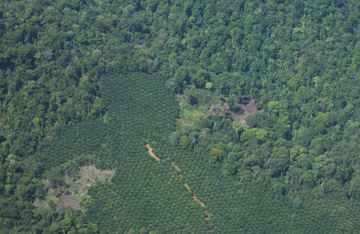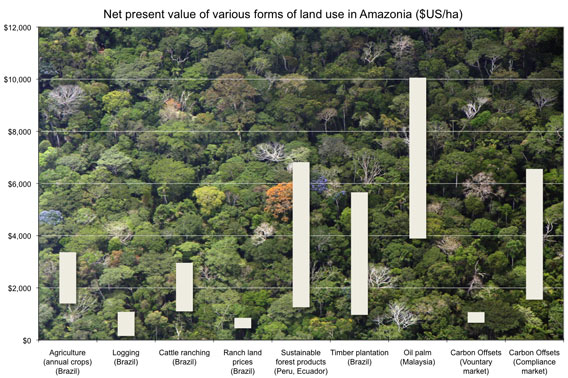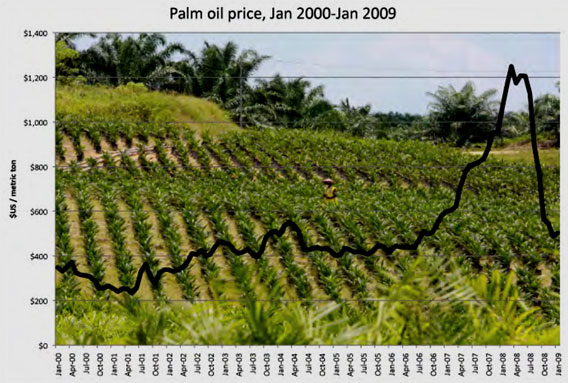|
|
Already a significant driver of tropical forest conversion across southeast Asia, oil palm expansion could emerge as threat to the Amazon rainforest due to a proposed change in Brazil’s forest law, new infrastructure, and the influence of foreign companies in the region, according to researchers writing in the open-access journal Tropical Conservation Science.
William F. Laurance, a senior scientist at the Smithsonian Tropical Research Institute (STRI) in Panama City, Panama, and Rhett A. Butler, founder of environmental science web site Mongabay.com, warn that oil palm expansion in the Brazilian Amazon is likely to occur at the expense of natural forest as a result of a proposed revision to the forest code which requires land owners to retain 80 percent forest on lands in the Amazon. The new law would allow up to 30 percent of this reserve to consist of oil palm.
 Oil palm and tropical forest. Photo by R.A. Butler |
“Oil palm expansion could be accelerated by, as well as contribute to, the drivers promoting forest loss by buoying the price of land, encouraging infrastructure expansion, and offering a new form of land use in the region,” Laurance said. “The entry of Malaysian oil palm operators — announced last year — may hasten development.”
Despite a recent fall in the price of palm oil due to declining demand for a wide range of commodities, oil palm expansion in Amazonia will be driven by economics — the high-yielding oilseed could offer higher financial returns than cattle ranching and mechanized soy farms, the dominant agricultural activities in Brazilian Amazon, and may employ larger numbers of people. Further, producers benefit from a “logging subsidy” whereby timber harvested from a tract of land helps offset the cost of establishing a plantation.
Although Brazilian authorities have said the Legal Amazon could sustain a more than 6 million hectares of oil without the need to clear forest land, Butler and Laurance express skepticism that expansion will be limited to degraded and deforested lands.
 Net present value of different forms of land use in the tropics. Net present value ($US) – defined as the total present value of income generated from land use for a particular activity – for mechanized agriculture, logging, cattle ranching, ranch land prices, sustainable forest products, timber plantation, oil palm, carbon offsets in voluntary markets, and carbon offsets in potential compliance markets. Background image by R.A. Butler. |
Should oil palm emerge as a new driver of forest conversion, impacts on biodiversity and climate could be significant. Research in Asia shows that plantations are biological deserts relative even to logged forests, while converting rainforest for oil palm releases at least 60 percent of above ground biomasss.
Although Laurance and Butler express concerns about oil palm expansion, they highlight ways to mitigate the most serious impacts, including strict enforcement of existing environmental laws, requiring landowners adopt eco-friendly cultivation techniques, and offering incentives to steer expansion towards abandoned lands rather than natural forest. They say local greens groups could help by raising public awareness about the potential environmental impacts of large-scale forest conversion for oil palm.
 Palm oil prices, January 2000 – January 2009-02-27. Palm oil prices from January 2000 to January 2009. Background image by R.A. Butler. |
Rhett A. Butler & William F. Laurance 2009. Is oil palm the next emerging threat to the Amazon?. Tropical Conservation Science Vol. 2 (1):1-10.